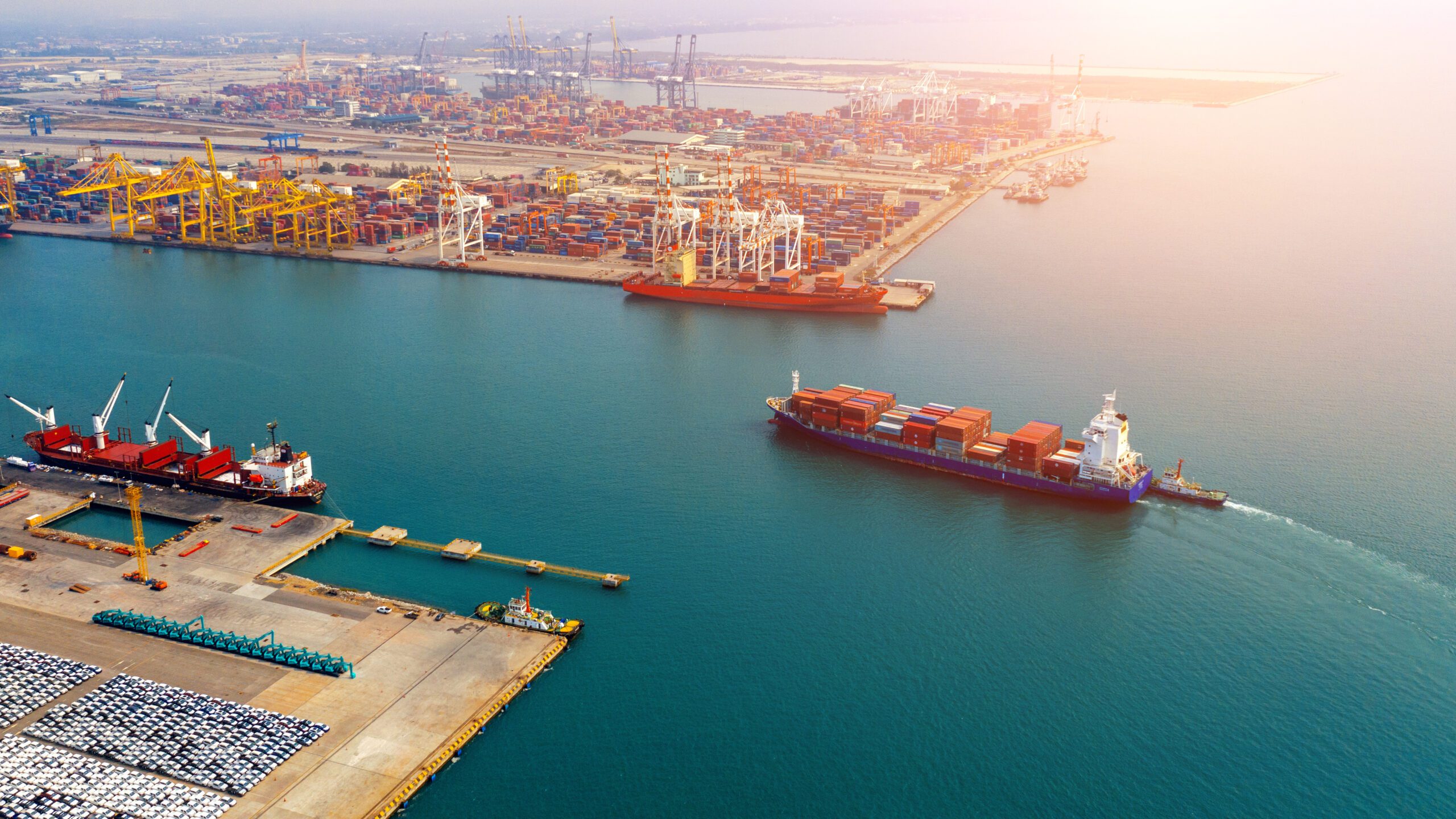TRADELAW TRENDS
The White House Proposes New Port Fees on Chinese Shipping and Mandates U.S. Vessel Utilization
Since taking the White House, President Trump has escalated the already tense trade tensions between the United States and China. New tariffs and other economic measures are in various stages of implementation and are intended to address perceived trade imbalances and unfair government subsidies aimed at stifling U.S. industry. One of the latest developments in this ongoing trade war is a new proposal by the Trump administration to impose significant port fees on Chinese cargo ships landing in U.S. ports, and to mandate by certain escalating percentages that U.S. cargo is freighted on U.S. flagged vessels, and ultimately on ships built in the U.S. (the “Proposal”). This move, which may have significant impacts and uncertainties for global trade, shipping costs, and consumer prices, appears to have substantial bi-partisan support in the U.S.
The Fee Proposal
The U.S. Trade Representative’s office (the “USTR”) has proposed charging up to $1.5 million per landing for Chinese-built vessels entering U.S. ports. The proposed fees would be based on the percentage of Chinese-built ships in a shipper’s fleet. The initial proposal would carry a fee of up to $1m for each landing by shippers having fleets with 50% or more Chinese-built vessels. The landing fee would reduce to up to $750,000 for fleets with 25% to 50% Chinese-built vessels, and for fleets with less than 25%, the landing fee would reduce to $500,000 per call. These fees are based on results of a USTR study that found that China increased its share of global shipbuilding tonnage from 5% in 1999 to over 50% in 2023, due to massive Chinese subsidies and preferential treatment for state-owned enterprises that are squeezing out private-sector international competitors.
U.S. Vessel Utilization
If enacted, the Proposal would require that in the first two years at least 1% of U.S. exports would be required to be shipped on U.S. flagged-vessels, with quotas for specific products, including agricultural, consumer and energy exports. The quotas would increase to 3% U.S. exports after two years, 5% after three years, and at least 15% of U.S. goods to be transported on U.S.-flagged vessels after 7 years.
In addition, the Proposal would require 3% of U.S. exports to be shipped on U.S. built vessels after 3 years and 5% on U.S.-built ships after 7 years.
Rationale Behind the Proposal
The USTR began an investigation of China’s shipping and logistics practices in March 2024, based upon a petition from five national U.S. labor unions who requested an investigation into the acts, policies, and practices of China targeting the maritime, logistics, and shipbuilding sectors for dominance. Specifically, the USTR found “China’s targeting for dominance unreasonable because it displaces foreign firms, deprives market-oriented businesses and their workers of commercial opportunities, and lessens competition and creates dependencies on China, increasing risk and reducing supply chain resilience.” On a similar path, in December 2024, the current U.S. National Security Advisor Mike Waltz (U.S. Representative R-Florida) co-sponsored “The SHIPS for America Act” along with Senator Mark Kelly, a Democrat, and Republican Senator Todd Young. The Ships Act, which is winding through the legislative process “represents a comprehensive approach to revitalizing the U.S. Merchant Marine by establishing national oversight and consistent funding for U.S. maritime policy, making U.S.-flagged vessels commercially competitive in international commerce by cutting red tape, rebuilding the U.S. shipyard industrial base, and expanding and strengthening mariner and shipyard worker recruitment, training, and retention.”
USTR encourages public comment on the Proposal and will hold a public hearing on March 24, 2025, in the main hearing room at the International Trade Commission.
Economic Impact and Potential Retaliation
These new fees are expected to have a significant impact on shipping costs since Chinese-built vessels account for a substantial portion of global shipbuilding. Many international shipping companies will be dunned with the fees if implemented. These increased costs shipping costs will inevitably lead to higher prices for imported goods. These fees are in addition to the existing tariffs on Chinese imports.
In this era of trade quid pro quo, China is expected to respond with retaliatory tariffs and restrictions on U.S. imports, further straining global supply chains and trade flows, creating uncertainty for global businesses.
How to Prepare
Global traders need to diligence their supply chains and explore alternative shipping routes and suppliers. The “China Plus One” strategy, where businesses diversify their supply chains by adding another country alongside China, may gain more traction. Countries like Vietnam, India, and Mexico could see increased investment as companies seek to mitigate the impact of these proposed port landing fees.
Conclusion
The proposed U.S. fees on Chinese shipping represent a significant escalation in the trade tensions between the two global powers. While aimed at addressing unfair practices and boosting domestic industries, these measures are likely to have widespread economic repercussions. As the public comment period for the proposal continues, businesses should closely watch to see how these developments unfold and what strategies they will need to adopt to navigate the changing landscape of global trade.
This TradeLaw Trends is for informational purposes only. Please contact the author for specific issues. We plan to monitor the topics addressed in this paper and provide future client updates when useful.


